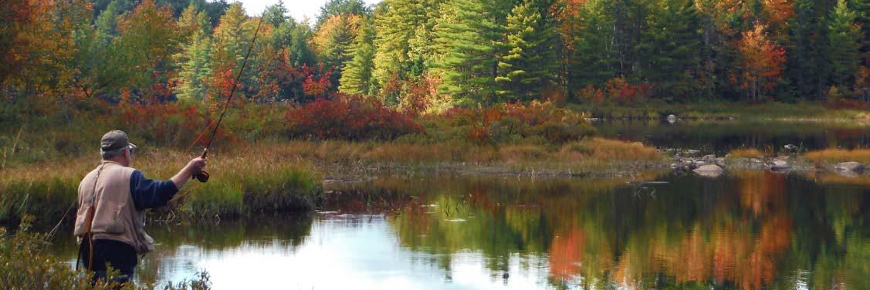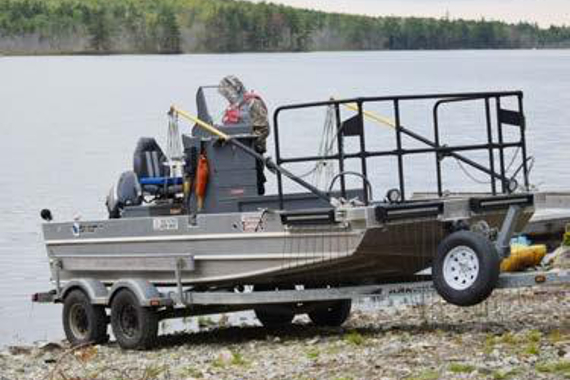
A volunteer angler fishes the head of Peskowesk Brook. Photo: © Darrin Reid
Hook, line, but not sinking
Saving the fishing legacy of Kejimkujik National Park and National Historic Site
What’s the issue?

Fishing has played an important role in the history of Kejimkujik National Park and National Historic Site – from traditional food gathering by the Mi’kmaq, to guided fishing trips before the park was established. The park’s pristine waters and intact aquatic communities are considered a regional gem because many other watersheds in Nova Scotia have been negatively affected by the introduction of non-native smallmouth bass and chain pickerel. Invasions by these species have had profound impacts on ecosystems; smallmouth bass and chain pickerel are voracious food consumers that outcompete or eat native species. Both species are now found in neighbouring watersheds, where they pose a direct risk to the park’s freshwater ecosystems, including native populations of brook trout and American eel.
What’s our approach?
- Consult with local Indigenous communities and scientific experts on potential solutions; identify the likeliest routes of invasion and conduct surveys to detect any incursions early on.
- Use visitor programs and media to increase public awareness, and prevent inadvertent introductions and further spread of invasive fish.
- Work with provincial partners in Nova Scotia to reduce existing invasive fish populations in neighbouring watersheds.
- Collaborate with anglers to build awareness and increase invasive species monitoring network.
- Build a plan to prevent future invasions and be ready to respond rapidly if invasive species are found in the park.
What’s been accomplished?
- In consultation with Indigenous communities and experts, identified high-risk watersheds in the park and conducted ongoing surveys to detect any invasions (none detected to date).
- Raised public awareness through the Learn to Fish program (114 participants in two years) and media coverage.
- Working with Nova Scotia Inland Fisheries, reduced the population of smallmouth bass in Cannon Lake next to the park to minimize the risk of invasion.
- Generated more than 1,100 hours of monitoring data per year through the Angler Diary Program (no detections of invasive species to date).
- Ongoing collaboration with Mi’kmaw First Nation, local and government experts to examine additional options for protecting large areas of the park from invasive fish, including the installation of invasive-fish barriers.
- Date modified :